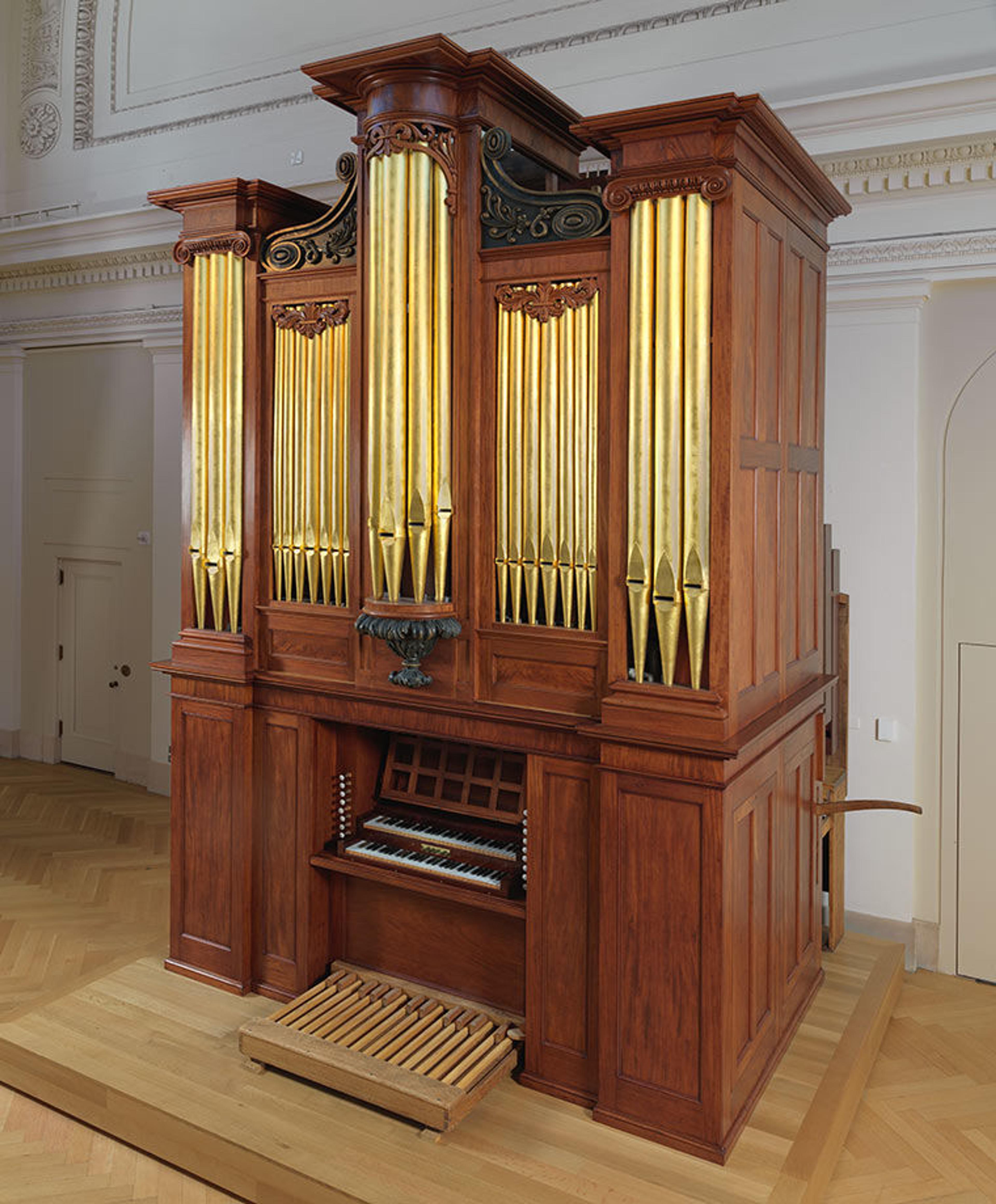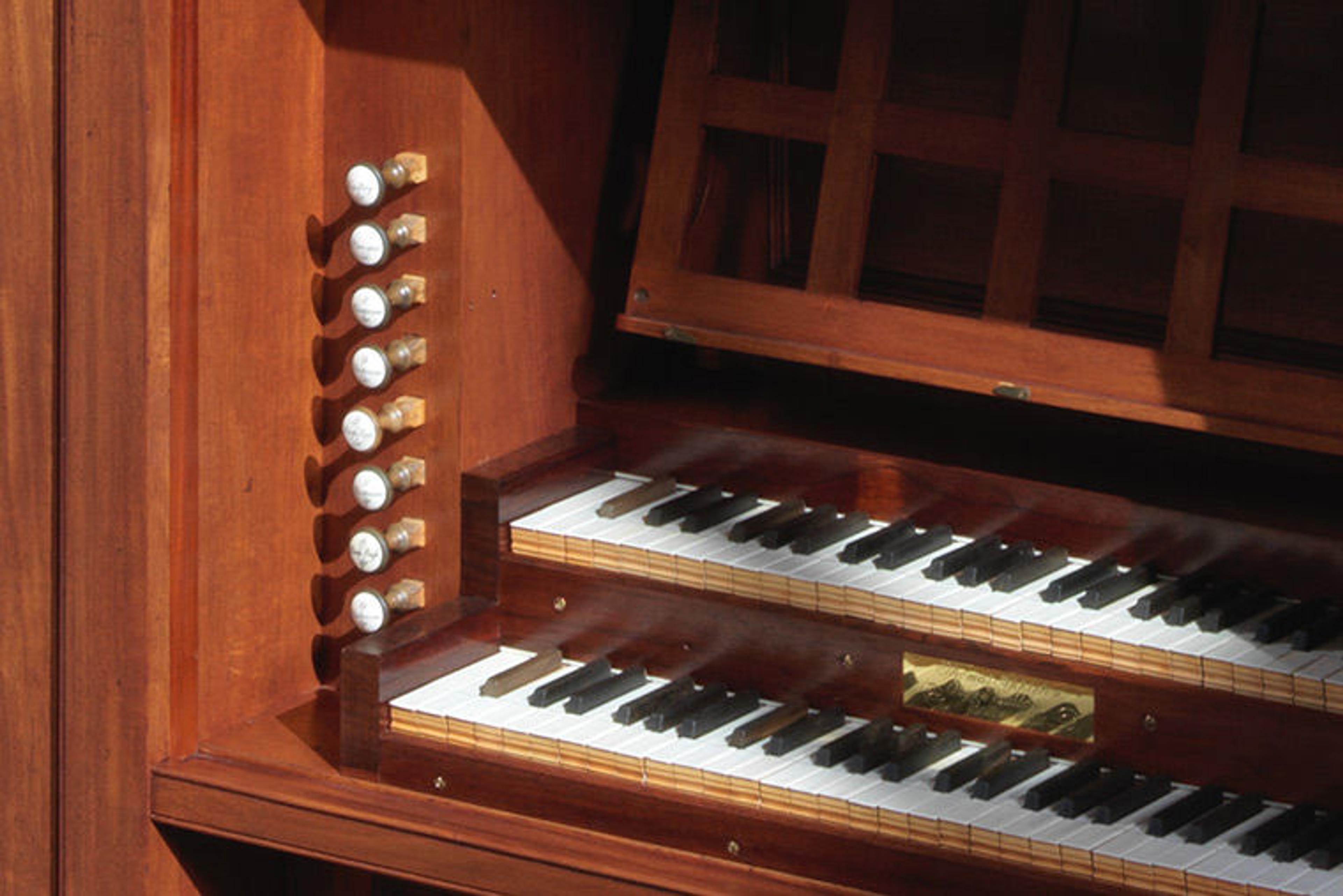YoungArts at The Met: Greg Zelek plays The Met’s 1830 Thomas Appleton Organ
From Jayson Kerr Dobney, Frederick P. Rose Curator in Charge of the Department of Musical Instruments:
In 2012, the Department of Musical Instruments at The Met established a partnership with the National YoungArts Foundation, an organization that nurtures emerging musicians. In this Collection Insights series, we present blogs written by six YoungArts alumni with short clips from concerts they presented on our Patrons Lounge series.
The Met's Patrons Lounge Concerts are made possible by The Dorothy Strelsin Foundation.
One of the unique challenges of playing the pipe organ is that each organ is different, and the organist can't take his instrument with him when he travels and performs. Fortunately, any organist who sits down at the Thomas Appleton Organ at The Met Museum will quickly realize that performing on the Appleton in this remarkable space makes for great music making in a venue like no other.

Thomas Appleton (American, 1785–1872), Pipe organ, 1830. Mahogany veneer, rosewood veneer, pine, gilt, ivory, ebony, maple, walnut, chestnut. The Metropolitan Museum of Art, New York, Purchase, Margaret M. Hess Gift, in memory of her father, John D. McCarty, 1982 (1982.59.1–.105)
It is unusual to find an organ and setting that complement each other as well as the Appleton and the Met Museum do. While the organ sounds very different from the balcony than from where the organist sits, its sound fills the gallery with warmth and beauty while maintaining a volume level that is appropriate for the space. Each stop (or sound) on the instrument has its own distinct quality and one has the option to play each stop individually or in conjunction with others. I am always impressed with how full the organ sounds even though it is not very large, and it is a real treat to walk around the gallery listening to this exquisite instrument.

Detail view of the keyboard and left-hand stops of the Appleton Pipe organ (1982.59.1–.105)
Upon first looking at the list of stops on the Appleton, I was hesitant to program repertoire that might require more of this modestly-sized instrument than seemed to be available. I was pleasantly surprised to find that this organ is quite versatile: not only can it play some earlier and uncomplicated music, but it can also handle larger works by the great organ composers. Even though the organ was built in 1830, contemporary music can be successfully programmed for it — this allows audiences to indulge in some of the greatest music written for the "King of Instruments."
It has always been a joy to perform on the Thomas Appleton Organ, and I can think of no better home for it than The Metropolitan Museum of Art. If I can recommend one thing, it would be to not only take in the sound and beauty from the gallery below, but to also come upstairs and see the organist dancing away with both his hands AND feet on this inimitable NYC gem.
YoungArts organist Greg Zelek plays Johann Sebastian Bach's Prelude and Fugue in A minor on The Met's 1830 Thomas Appleton Organ. Recorded live on March 2, 2018.
The Department of Musical Instruments at The Met devoted their entire 2017–18 season of Concerts for Patrons to performances by six YoungArts prizewinners, all of whom performed on historic instruments from The Met collection. The musicians were then asked to write about their experiences. See the full series here.
Greg Zelek
Organist Greg Zelek is a YoungArts Silver Award Winner.